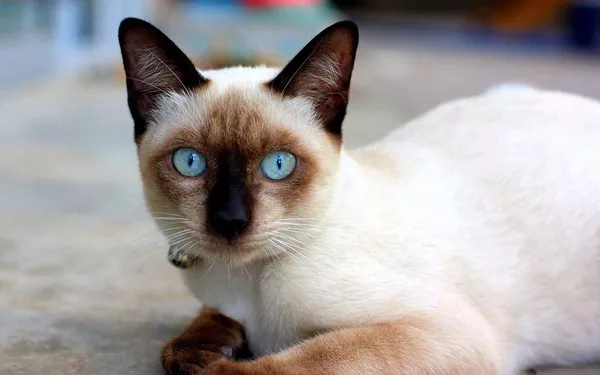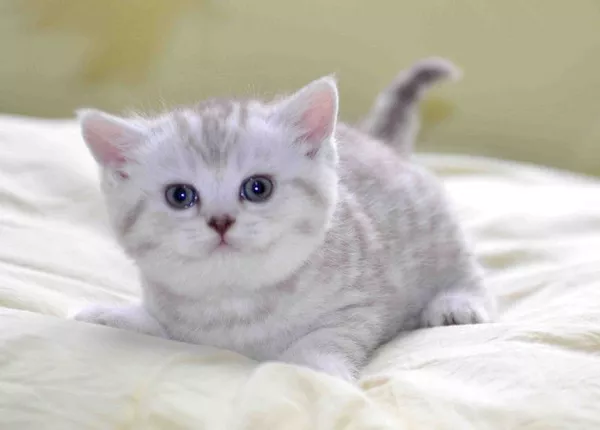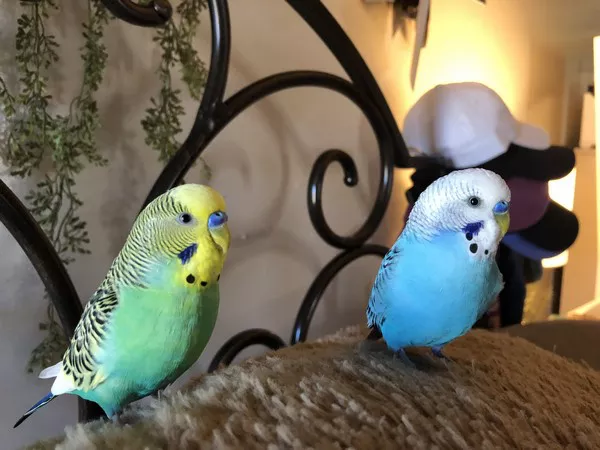Domestic Shorthair cats, often affectionately referred to as “moggies,” are a popular choice for pet owners seeking a loving feline companion. These cats come in various colors and patterns, showcasing their diverse genetic makeup. While their adaptability and friendly nature make them cherished pets, many owners find themselves asking a common question: do domestic shorthair cats scratch furniture?
Understanding Feline Behavior:
Before delving into the scratching habits of domestic shorthair cats, it is crucial to comprehend the innate behaviors of all felines. Scratching is a natural and instinctual behavior for cats. It serves several purposes, including the maintenance of their claws, stretching their muscles, marking territory, and expressing emotions.
The Role of Scratching in Cat Behavior:
Scratching is not a destructive habit but rather a vital aspect of feline behavior. Cats have scent glands in their paws, and by scratching, they release pheromones that mark their territory. Additionally, scratching helps them shed the outer layers of their claws, keeping them healthy and functional. Understanding these underlying reasons can assist cat owners in managing scratching behavior more effectively.
Domestic Shorthair Cats: Overview and Characteristics:
Domestic Shorthair cats are a diverse group, encompassing various breeds and mixed-breed cats with short coats. They are known for their adaptability, intelligence, and affectionate nature. Despite the wide range of appearances within this category, domestic shorthairs share common characteristics that set them apart from other feline breeds.
Adaptability of Domestic Shorthair Cats:
One notable trait of domestic shorthair cats is their adaptability to different environments. Whether living in a spacious house or a cozy apartment, these cats tend to adjust well. Their ability to adapt is linked to their mixed genetic heritage, which often results in a robust and resilient constitution.
Scratching Behavior in Domestic Shorthair Cats:
As with all cats, scratching is a fundamental behavior for domestic shorthairs. The short coat of these cats does not exempt them from the need to scratch. In fact, it might be argued that the shorter claws of domestic shorthairs could make scratching more crucial for maintaining healthy claws.
Factors Influencing Scratching Behavior
Several factors influence a domestic shorthair cat‘s scratching behavior. Understanding these factors is key to addressing and managing this natural instinct in a way that is both beneficial for the cat and acceptable for the owner.
Environmental Enrichment:
Domestic shorthair cats, like all felines, benefit from a stimulating environment. Providing scratching posts, cat trees, and other designated surfaces can encourage appropriate scratching behavior. These items not only serve as outlets for scratching but also contribute to the cat’s overall mental and physical well-being.
Claw Maintenance:
Cats, including domestic shorthairs, scratch to maintain their claws. Regular trimming of a cat’s claws can complement scratching behavior. This not only prevents excessive damage to furniture but also ensures the cat’s claws remain at a manageable length.
Territorial Marking:
Scratching is a natural way for cats to mark their territory. By providing scratching posts strategically placed in different areas of the home, owners can help satisfy this instinct without resorting to destructive scratching on furniture.
Positive Reinforcement:
Positive reinforcement plays a crucial role in modifying a cat’s behavior. When a domestic shorthair cat uses a scratching post or designated surface, praising and rewarding the cat reinforces the desired behavior. This encourages the cat to repeat the behavior in appropriate locations.
Common Challenges and Solutions
Despite the best efforts of cat owners, challenges in managing scratching behavior may arise. Recognizing these challenges and implementing effective solutions is essential to maintain a harmonious relationship between cats and their human companions.
Furniture Protection Measures
Cat Furniture Protectors:
Specially designed furniture protectors, such as transparent adhesive sheets or slipcovers, can be applied to areas where scratching is a concern. These protectors create a barrier, preventing damage to furniture without compromising the cat’s need to scratch.
Double-Sided Tape:
Cats generally dislike sticky textures. Applying double-sided tape to the edges of furniture can deter cats from scratching these surfaces. This method is a non-invasive way to protect furniture and redirect scratching behavior.
Alternative Textures:
Providing alternative textures for scratching can be effective. Cats may have preferences for certain materials, so offering a variety of scratching posts with different textures, such as sisal, carpet, or cardboard, can cater to individual preferences.
Catnip and Attractants:
Sprinkling catnip or using catnip-infused sprays on designated scratching areas can attract cats to those surfaces. This not only encourages appropriate scratching behavior but also makes the designated areas more appealing to the cat.
Behavior Modification Techniques:
When faced with persistent scratching issues, employing behavior modification techniques can be beneficial. It is essential to approach behavior modification with patience, consistency, and a deep understanding of feline psychology.
Positive Reinforcement Training
Reward-Based Training:
Positive reinforcement involves rewarding desired behaviors to encourage their repetition. When a domestic shorthair cat uses a scratching post or designated area, immediately reward the cat with treats, praise, or affection. Consistency in rewarding positive behavior reinforces the association between the action and the reward.
Clicker Training:
Clicker training is another effective method for behavior modification. By associating the sound of a clicker with positive reinforcement, owners can communicate approval to the cat when it exhibits the desired behavior, such as using a scratching post.
Redirecting Unwanted Behavior:
If a cat is caught in the act of scratching furniture, it is crucial to avoid punishment, as this can create stress and anxiety. Instead, gently redirect the cat to an appropriate scratching surface and reward the cat when it uses the designated area.
Understanding Cat Communication
Cats communicate through body language, vocalizations, and behaviors such as scratching. Recognizing the subtle cues that cats exhibit can enhance the bond between owners and their feline companions.
Interpreting Cat Body Language
Tail Position:
The position of a cat’s tail can convey its emotional state. A raised tail indicates a content and confident cat, while a puffed-up tail may signify fear or agitation. Observing the tail during scratching behavior can provide insights into the cat’s emotional state.
See Also:How to Care for Your British Shorthair Cat?
Ear and Whisker Positions:
Ears held back or whiskers pulled tightly against the face may indicate discomfort or irritation. Monitoring these facial expressions during scratching can help identify if the cat is experiencing stress or if the behavior is a result of a medical issue.
Purring and Vocalizations:
While scratching is typically a silent activity, paying attention to a cat’s overall vocalizations and purring can offer additional clues about its mood. A content cat is less likely to engage in destructive scratching behavior.
Medical Considerations
In some cases, changes in scratching behavior may be linked to underlying medical issues. It is essential for cat owners to be vigilant and seek veterinary attention if they observe significant alterations in their cat’s scratching habits.
Health Issues and Scratching Behavior
Dermatological Conditions:
Cats may scratch excessively if they have dermatological issues such as allergies or skin infections. It is crucial to monitor the cat for signs of discomfort, redness, or lesions on the skin. A veterinary examination can help diagnose and address these health concerns.
Arthritis and Joint Pain:
Older cats or those with arthritis may experience discomfort while scratching. Providing softer or padded scratching surfaces can alleviate stress on their joints and encourage appropriate scratching behavior.
Parasites:
Fleas and other parasites can cause intense itching, leading to increased scratching. Regular flea prevention and prompt treatment for infestations are crucial to maintaining a cat’s overall well-being.
Conclusion:
In conclusion, domestic shorthair cats, like all felines, have a natural instinct to scratch. This behavior is not only normal but essential for their physical and emotional well-being. Understanding the factors influencing scratching behavior, providing appropriate outlets, and employing positive reinforcement techniques can help cat owners manage this instinct effectively.
By creating an enriching environment, addressing behavioral challenges with patience, and considering the unique preferences of individual cats, owners can foster a positive relationship with their domestic shorthair companions. Additionally, recognizing the role of scratching in cat communication and remaining attentive to changes in behavior can contribute to the overall health and happiness of these beloved feline friends.
Related Topics:
British Shorthair Cat Breeding: Duration, Number, Care
How Much Should a British Shorthair Weight?
Are British Shorthair Cats Truly Cuddly Companions?
























